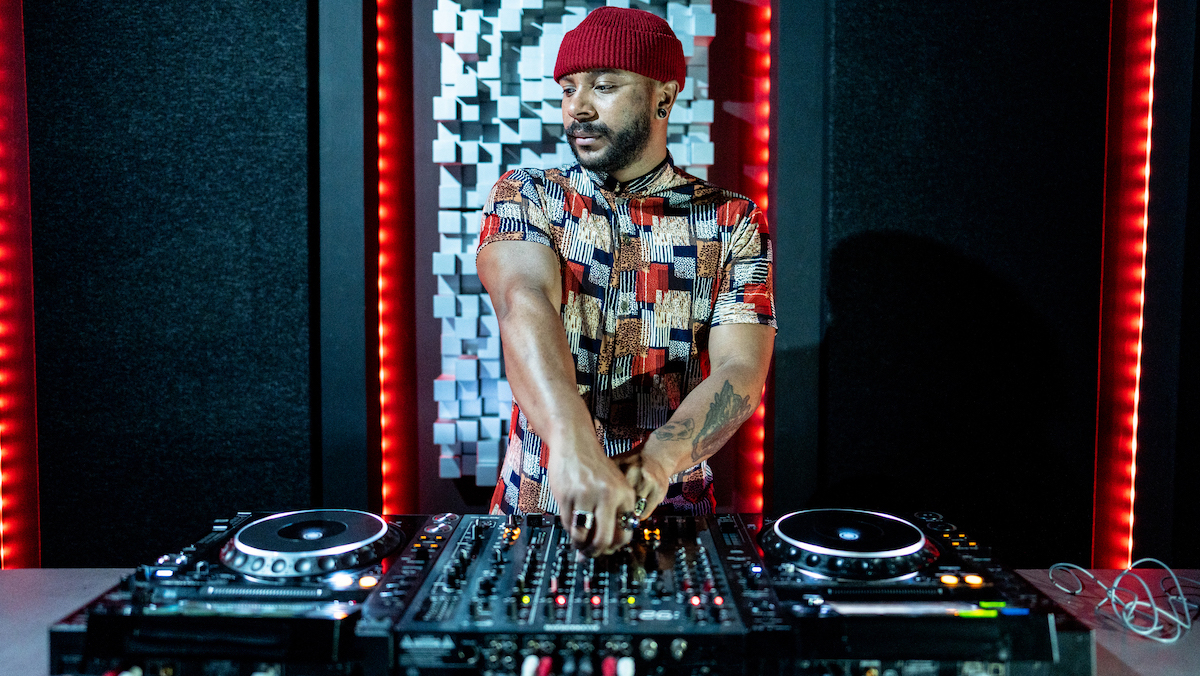
Aside from the faders and cue buttons, the EQ and filters are probably the most important and most used controls on a DJ mixer. While techniques like looping and scratching might not be essential for every DJ, the EQ is one of the central tools used to mix between tracks and most DJs will use it at every gig they play.
Understanding what EQ and filters actually do can really help improve your mixing and make your transitions sound better, as well as giving you a few options to add some frequency-related sparkle to your set. So check out these EQ tips and techniques specifically for DJs. (For all these examples, we’re assuming that you’re mixing two tracks together and we'll call the current tune that’s playing Track A, and the tune you’re about to mix in Track B).
The basics
Let’s start with a brief refresher: the EQ controls on your mixer allow you to either boost or cut a particular audio frequency range. DJ mixers split the sound spectrum up into three bands, low, mid and high, and while there are plenty of exceptions, each frequency band is generally associated with certain musical sounds. So broadly speaking, the low EQ can cut or boost basslines and kick drums, the high EQ can do the same to hi-hats, claps, and cymbals, while the midrange EQ cuts or boosts the range where most of the frequency information for acoustic instruments like guitars, keys, lead synths, brass and vocals will be.
Filters vs EQ: Which to use and when?
Filters are often used by DJs in similar ways to EQ, to remove frequencies from one track while mixing to another, but there are two fundamental differences between EQ and filters. Filters remove all the frequency information below a certain, moveable threshold, while EQ reduces frequency information in certain, pre-defined and immoveable bands.
In practical terms for the working DJ, this means that filters can be more precise and exacting in sculpting the sound than EQ, but they’re also more extreme in their impact on the music. So, for example, you can use a low pass filter to cut out all the top and high mids on one track, and a high pass filter to cut out all the bass and lower mids on the other, creating a newly blended version of the two tracks on the fly, in a way that you can’t with EQ. How and when you choose to use a filter or EQ is pretty much down to personal taste, how you like to mix, and what works in the context of your set.
Trick 1: Cut the bass, reach for the lasers
No doubt neuroscience has a few possible explanations for why dancers instinctively put their hands in the air when the DJ cuts the bass and why they love it when the DJ brings the bass back in, but whatever the reason, it’s a solid tool in your DJ armoury. A one or two-bar bass cut at the end of sixteen bars (a bar is four beats: count four consecutive kick drums in a house track, that’s a bar) can provide a nice little lift for the room, while an eight-bar bass cut can be a great tension builder, creating a mini impromptu breakdown. It is of course again down to personal taste and how your audience reacts, but like many DJing techniques, cutting the bass tends to be more effective when used less: if you’re cutting the bass on every track there’s a danger your audience are going to get bored of it pretty soon.
Trick 2: Low-end pressure
A good general rule – and like all DJing ‘rules’, there will always be exceptions – is don’t play two basslines at the same time, as it will likely sound muddy and muffled over a club/festival sound system, even if the two tracks are in the same key. A simple technique to avoid clashing basslines while mid-transition is simply to cut the low end in Track A at the moment when the bassline on Track B appears, then continue your transition. Some of Track A’s bassline frequencies might also be in the lower mids too, so a cut of the mids might also help this process.
Alternatively you might gradually cut the bass EQ on Track A while mixing in the intro of Track B so that when B's bassline begins there's far less of Track A’s bass frequencies. And you can always use the high pass filter instead of the bass EQ to get a more extreme, noticeable bass cut.
Trick 3: High EQ switch
A similar neat little EQ mixing trick is to begin the transition with the high EQ of the incoming Track B turned right down, then once you’ve mixed it in, turn the high EQ on Track A right down at the exact moment you turn it up on Track B, essentially swapping the hi-hats and top end percussion from the outgoing track to the incoming one.
Trick 4: Three-band blend
A great mixing technique if you want to get into really long, flowing transitions is to turn all three EQ bands down on Track B before mixing it in, bring up the volume and gradually increasing each band as you gradually decrease each corresponding band on Track A; silky smooth.
Trick 5: Low pass filter à la French touch
When it comes to filters you can use them like EQ to perform long drawn-out blends, but you can also use the low pass filter as a great way to generate tension by mimicking the kind of filter sweeps you get in filter-disco tracks. Super simple and super effective, you simply loop the intro of the track you’re bringing in – or, if it’s got a lengthy intro, you might not even need to do that – then in your headphones before you mix it in, apply the low pass filter and turn it down till it sounds muffled, as though you were listening to it from next door. Then begin the transition and gradually open up the filter, slowly revealing the tune and, once you’ve opened the filter completely, cut the loop and let the track play. With a bit of luck and DJ judgement, it can be a great tension builder.
Finally, it's worth remembering that while many venues will have limiters on the main sound system, not all will, and turning up the high and mid-EQ can damage your and your audiences’ hearing. Turning up the EQ also has the potential to damage the sound system too. So again, all rules have exceptions, but generally when DJing, unless you’re addressing a specific problem such as compensating for lack of low end on an older tune for example, you’re going to be cutting rather than boosting EQ. And if your mixing style involves lots of boosting the EQ, just make sure you pay close attention to the meters, and indeed your ears.
Related buyer's guides
- Best DJ controllers for Serato, rekordbox, Traktor and more
- Best beginner DJ controllers for budding mix masters
- Best DJ headphones from budget to pro-level
- Best DJ turntables for vinyl DJs







